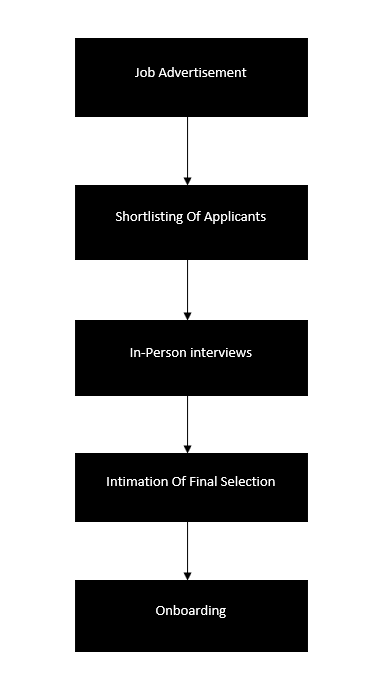Hiring
How to start a recruitment process and not die trying
Recruiting the best professionals can be daunting for HR managers. Here is a detailed flowchart about every aspect of the recruitment process.
Hiring
Recruiting the best professionals can be daunting for HR managers. Here is a detailed flowchart about every aspect of the recruitment process.

Isabel García
HR Consultant

7 of January, 2025
Whenever a distinguished employee leaves an organization, it becomes the responsibility of the HR department to fill the position with the most appropriate candidate. Dedicated employees are the pillars of the success of an organization. However, recruiting and retaining the best professionals can be daunting for HR managers. Keep on reading and get to know every aspect of the recruitment process.
Whenever a new slot opens up, or an old employee leaves the organization, it becomes the responsibility of the HR department to hunt for a suitable candidate. Some organizations do outsourcing recruitment, which is best when there is no desire to heed all the steps involved. Many other organizations prefer to do it themselves.
The recruitment process steps must be designed carefully as they impact the organization’s productivity. Following is a flowchart that will demonstrate the critical steps of the recruitment strategy.

It is the first step in recruitment. HR will enlist the job requirements and the job description to attract potential candidates. Job advertisement must contain all the respective details and contact details of the HR representatives in case of any queries.
Once the HR department posts a job, applications come pouring in from the interested candidates. Generally, the number of applicants is higher than the number of vacancies. Candidates are then shortlisted based on relevant education and working experience.
An interview is the most significant step when it comes to hiring. It is a one-on-one interaction to ascertain the qualities and behavioral traits of the candidate. Normally, most HR recruiters prefer single interviews.
However, the number of interview sessions can be more than one, depending on the organization’s policies. For instance, the Apple recruitment process comprises three interviews. The first is with the HR department. The second interview at Apple is with the store manager, and the final interview is with the general manager.
The above example is of a complex recruitment process. Anyhow, the number of interview sessions varies depending on organizations’ policies.
Intimating the results (either selected or rejected) is the sole responsibility of the recruitment team. This step of sharing the results of interviews is best done at the earliest. Furthermore, the candidates are intimidated by results either by email or call. However, e-mail is mostly preferred.
Onboarding is the final step and is of great significance. It comprises an offer letter, orientation, and on-job training. The HR department communicates the selected candidates to join on the required date after they have signed the offer letter.
It is one of the most critical steps since 25% of candidates do not show up, even after accepting the offer letter. Therefore, onboarding should be seamless to retain the selected candidates.
The recruitment process is full of loopholes, and there is so much room for improvement. Thus, HR experts are always searching for newer methods and innovations to ease the workload of HR management.
Following are some of the steps that can develop a good recruitment process and assist the HR team in efficiently managing the process.
The job description in the advertisement should be listed after taking due input from the respective department. For instance, if there is a vacancy in the accounts department, the HR team should formulate the job description on the directions of an accounts department member.
Finding the best candidate for the vacant slot is the ultimate goal of the HR recruitment team. Therefore, the HR team posts advertisements on every relevant platform to attract the best candidates. Referral programs are the best to involve all the relevant departments finding the best candidates.
Referral programs will engage the current employees, and they will bring forth the best persons for the job from their social circle.
Communication is the face of an HR department. It is necessary to have a proactive communication mechanism to develop a recruitment strategy. Without proper communication, you will lose the best candidates in a flash.
HR can streamline a recruitment process if the interview panel is pre-defined. It is the job of the HR department to line up the members for the interview panel. The interview is the major scrutinizing step of the recruitment process. Therefore, HR must select the interview panel with due care and deliberations.
An HR manager can enhance a recruitment process by undertaking a speedy process. A slow recruitment process will make it less attractive for the best candidates, and they will be looking out for other options. Hence, the HR department should speedily execute the recruitment process while keeping all the parameters in check.
A well-planned and executed recruitment process has countless benefits for the organizations. Let us highlight some of the top benefits of a robust recruitment process:
To optimize the recruitment process at your company you can use Sesame HR. It’s the best way to attract and manage top talent in a single place.